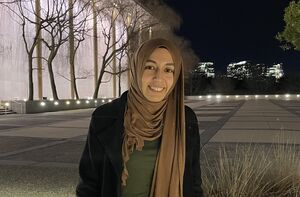
From time to time, we wonder what actually exists beyond definitions that are conceptualized on a solid basis, such as science and art, and we think that they can never stand side by side. However, in fact, this is not an absolute truth. We may want to reformulate their form of expression, delicately melting their edges and corners to intertwine them into each other. Then, we can find a simpler way to take refuge in it with all our enthusiasm. These two disciplines have a natural common ground that encompasses each other. Therefore, they need to be considered from a holistic perspective.
The Monte Verita Literary Event started as an unknown journey for most of us. Because we, as writers and scientists, did not know how to blend the areas we classified as our interests, when we had already come together as independent thoughts like two separate branches of life. We did not know how to skillfully place these two areas at the center of our lives and show that these areas are inseparable from each other. The spirit of the place is so important. I personally experienced this deeply in Ascona. Nutrition is not just about food; just like nature, people and all the beauties around us, the soul must reach satisfaction and serenity in order to feel art. In this way, we can express what we hear, read and see through art and science as part of our work. The literature festival was a preliminary step for this. Writing is a way to convey expression. Those of us who work in science sometimes neglect to convey what they know or fail to realize its importance. Either we don't trust words, or we don't know how to use them. We went on such a journey together so that the writers could guide us. We need the tools of art to convey what we know. I don't think it would be a coherent way of thinking to claim otherwise. For example, the language we use to describe the structural intricacies of a small organism may be ordinary literary information that can distract the readers. However, an article that explains this as if the readers are watching a three-dimensional movie arouses curiosity, and what triggers is actually the appeal of art. While what makes science attractive is the systematically created order, what makes art attractive is the sense of perfection. The magnificent fictional structure we talk about in science can only be achieved with perfect narrative power. This is what Monte Verita makes me feel the most. First of all, write, read and re-write... Science is not separate from writing, transferring what you know, reading and rewriting. First you need to learn to write and believe in the power of words. We need to learn this from a literary figure and a professional.
In summary, Ascona was the beginning or the end of a transformation. While enjoying learning, we realized that art is the complement of science, and science is the reality that transforms and integrates into art. They helped us understand in different ways. We engaged in different activities and discovered common points. It was amazing how the things we had in mind were reflected on the field.
Voluntarily gaining the sensitivity to feel the presence of masterpieces depicted in works of art was immeasurable. We all come from different worlds, but as if we are under the influence of a magnetic force, we are consciously dragged into a world that can only be seen by those who value art above all else.
Esra
I received a master's degree in Biochemistry from the University of Delaware and a PhD in Bioengineering from George Mason University in the USA. My greatest effort has always been to reach a level of understanding the spirit of things and nature. Therefore, understanding and engineering the universe at the molecular level would strengthen my understanding and perception at a very deep level. Science has been a key part of my intellectual journey to unravel many of the knots. During my doctoral studies, I did a lot of research on DNA nanotechnology and was amazed by the power of engineering tools to mimic living things in nature. I developed a vaccine by folding synthetic DNA into many different structures, one of which was an icosahedral shape that mimicked the structure of viral capsids and mimicking became one of the ways of reflection of nature.
Fundamentally, I believe that the lights that illuminate our paths mostly come from deep research, listening to our inner thoughts, and making reflections based on our observations, as is the source of all philosophical thoughts. My whole vision was shaped on these. Also, inspirations from our environment help us speak after they begin to feed our artistic soul. During my academic journey, I participated in many different activities, as if picking up intellectual crumbs scattered on the ground as a trail to follow. Now I am at Bridging Horizons, which will lead to a unique journey to nurture our knowledge by spanning different disciplines. The meeting in Ascona will be a great starting point, first of all, to outline the goals of Bridging Horizons and to enrich our perspectives and exemplify what is to come in the future.